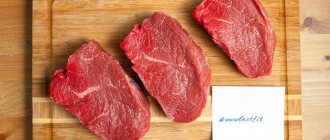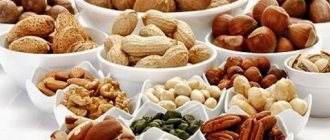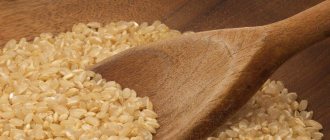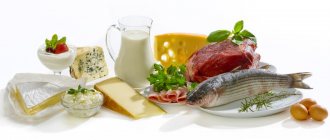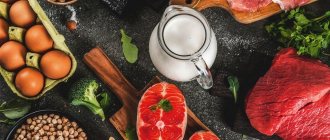The question for those involved in strength sports, especially those trying to gain muscle mass, is far from idle. We all know that to build new muscle structures it is necessary to supply the body with building material. Due to the fact that muscles are made of proteins, it is quite logical that proteins are this building material. All that remains is to load yourself with more protein material, but... then someone said that more than 30 grams of protein cannot be absorbed at a time! And how to be here? Goodbye mass gain? Or maybe the solution is to eat more often, say, every hour? Then you can score more of these 30s in a day!
But here another question arises: can eating every hour be considered a separate meal?
And there is another question, do guys who weigh 100 or 120 kilograms also have a norm of 30 grams per meal? Or is their standard more, say, 50 grams?
“Good” questions, to which, like you, your humble servant, I have not seen any substantiated answers in reliable sources, such as, say, physiology textbooks. Articles or videos on this topic usually contain some kind of logic, which is often quite justified, but until now I have not found any serious data. Yes, there are, for example, recommended portions from sports nutrition manufacturers regarding protein drinks, where a measuring scoop of whey or casein confirms just such norms of the order of 30-35 grams with a total protein of 22-25 grams. But, let's agree, this is all indirect evidence.
And now your humble servant came across one interesting study that can help answer questions about the amount of digestible protein. The purpose of this study was not really to directly examine protein intake. People set out to determine whether it was possible to replace the optimal dose of post-workout protein (according to numerous studies, this is 20-25 grams of protein) with an alternative option of a lower dose, but enhanced with the main anabolic amino acid – Leucine. As part of this study, a wide range of indicators of absorption, transport, stimulation and synthesis of amino acids was taken. And although scientists have studied other aspects, indicators of protein absorption both at the level of the gastrointestinal tract and at the level of utilization by the muscle cell have specific numbers and will help to form a certain picture about the transport capacity of the body in general and the gastrointestinal tract in particular for the absorption of proteins.
Why is it important to eat protein?
This is one of the most important substances that a person needs every day. And that's why:
- A building element of the entire body, organs, tissues. It consists of muscles, skin, nails, hair, internal organs, immune and circulatory systems.
- Affects metabolism. The more it is, the better the metabolism, and vice versa.
- Combines with each other and moves the necessary substances to the cells.
- Protects the body from external influences , actively participating in the functioning of the immune system. Colds appear less and less frequently.
- Helps the brain function better.
- Good source of energy. One gram is equal to four calories.
- Quickly fills the stomach and leaves you feeling full for a long time.
Without sufficient protein, a person becomes lethargic, all systems function poorly, and the appearance of skin, hair and nails deteriorates.
Important! Excessive amounts will lead to kidney and liver problems.
The body will be poisoned by decay products.
How to Combine Whey Protein and Meals: Tips
Here are some more tips:
- When losing weight, it is important to reduce the amount of fat and carbohydrates you consume.
- If you consume a lot of regular protein foods, you will increase your daily caloric intake.
- This is why it is so important to replace regular foods, such as dinner, with whey protein.
- After physical activity, you need to drink a protein shake so that your muscles receive the necessary nutrients and microelements.
Whey protein is quickly absorbed, so it is effective before and after training.
Tip: Don't try to exceed your protein intake and drink more of it to lose weight faster. All the same, only the amount that the body needs will be absorbed, namely no more than 30 grams . The rest will be excreted through the kidneys, and this is an additional burden.
Replace only 50% of the total amount of protein entering the body with protein.
Daily protein intake
The minimum indicator, which is not recommended to be reduced, is 40 g of pure substance (not meat or fish). How much is needed depending on activity:
- Adults with jobs without much physical exertion need 1.2 g per 1 kg of body weight.
- If your work involves little physical activity, sports a couple of times a week, then you will need 1.6 g per 1 kg of weight.
- When playing sports three times a week you need 1.8-2 g.
- Professional athletes may need about 2.5 g per 1 kg of weight.
- If there are problems with the kidneys, when they work poorly and cannot cope with filtering, you will need 0.6-0.8 g per kilogram of weight.
- During pregnancy, you will need about 2 g. After all, at this time, building material is needed for two organisms.
It is recommended from 10 to 30 g per meal. Maximum - 35 g. Approximately this is contained in a glass of cottage cheese or a small chicken breast. It is recommended to distribute something like this:
- morning - 15 g;
- snack - 5 g;
- lunch - 30 g;
- snack - 5 g;
- dinner - 20-25 g.
If you want to lose weight, you should not reduce the amount of protein or eliminate it. It will help speed up metabolism, burn fat and fill you with energy without being stored in fat.
Features of the analysis
By examining the ejaculate, the doctor has the opportunity to assess the degree of male health. In addition, a spermogram helps to identify a number of diseases of the genitourinary system (prostatitis, varicocele, sexually transmitted diseases, etc.).
It is mainly prescribed to men who are suspected of infertility. Modern reproductive technologies make it possible to solve the problem even when the spermogram result turns out to be bad.
In order for the analysis to be as accurate as possible, it is important to properly prepare for it. The rules for taking a spermogram are as follows:
- It is possible to collect material for research only through masturbation, since after sexual contact elements of the vaginal microflora may be found in the material being studied.
- It is prohibited to use a condom, as the product contains artificial lubricant.
- At least 2 weeks before the proposed test, you are prohibited from taking any medications. This is especially true for antibacterial drugs, which can affect the interpretation of the analysis.
Urologist Alexander Nikolaevich Zakutsky will tell you how to properly prepare for the analysis:
- Material for research can only be collected in laboratory conditions. In some cases, it is possible to do this at home. However, in this case, it is important to observe hygiene standards and collect the ejaculate in a sterile plastic container. During transportation, the container should be kept at a temperature of about 37 degrees. Alternatively, carry it under your arm. Transportation time should not exceed 1 hour.
- For 3-4 days before collecting material, it is important to observe sexual abstinence, refuse to visit the bathhouse, take a hot bath and drink alcoholic beverages.
In order to be able to assert the accuracy of spermogram decoding, it must be done at least 2-3 times. This is due to the fact that the composition of sperm can be influenced by many factors, such as foods consumed, medications, stressful situations, high physical activity, etc.
There are situations when, after orgasm, sperm is not released in the usual way. This condition is called retrograde ejaculation, when ejaculation occurs into the bladder. In this case, sperm can be detected in a urine test.
Retrograde ejaculation
A bad result after the first spermogram should not become a reason for a man’s upset. To talk about a particular problem, the analysis must be carried out at least 2-3 times. The interpretation of a repeat study may be different.
List of Protein Rich Foods
The substance is present in plant and animal foods. It differs in structure and amino acid composition. Therefore, it is important to fill your diet with a variety of proteins. A third comes from plant foods, two thirds from animal foods.
Animal products
The amount of the element depends on the type of food. The quality of the food is also important. For example, when dieting for weight loss, fatty meat is not suitable, even if it contains a lot of protein.
Meat, poultry
Per 100 g:
| rabbit meat | 21,1 |
| chicken | 20,8 |
| beef | 20 |
| mutton | 19,8 |
| horse meat, veal | 19,7 |
| turkey | 19,5 |
Most of all in natural ham - 22.6 g.
Milk products
Per 100 g:
| hard cheeses | 24-26,8 |
| powdered milk | 25,6 |
| cottage cheese | 14-18 (the fatter, the more) |
| cow's milk | 4,3 |
| kefir | 3,8 |
| goat milk | 3,6 |
In processed cheese, due to heat treatment, the amount is greatly reduced. Dairy products are well digested. But not for people with allergies or lactose intolerance.
Seafood
Per 100 g:
| Red caviar | 28,9-31,6 |
| pollock caviar | 28,4 |
| tuna | 24,4 |
| shrimps | 24 |
| pink salmon, chum salmon | 21-22 |
| squid | 18 |
| cod | 17 |
Seafood protein is different from meat. It is important to alternate them to fill the body with all the elements.
Eggs
Per 100 g:
| chicken | 12,5 |
| raw protein | 11 |
| raw yolk | 16 |
| quail | 13 |
| duck | 13,3 |
For better absorption, it is worth eating soft-boiled eggs instead of hard-boiled ones. It is beneficial to eat raw yolk. To rid it of possible microbes, you just need to sprinkle it with acetic or citric acid.
Products of plant origin
They usually have less protein than animal foods. But this food is also necessary for humans. With the right combination of plant and animal products, the body will receive all the beneficial substances.
Legumes
Per 100 g:
| lentils | 25 |
| chickpeas (chickpeas) | 19 |
| soybeans | 11 |
| beans | 6-10 (depending on the variety) |
| fresh green peas | 5 |
They are added to first and second courses, and also cooked separately. Legumes take a long time to digest; they should be consumed 6 hours before bedtime.
Cereals, cereals
Per 100 g:
| quinoa | 15 |
| buckwheat | 12,6 |
| millet | 11,5 |
| semolina | 11,2 |
| barley | 9,5 |
| pearl barley | 9 |
| rice | 7 |
You should not often combine cereals with animal protein; it is better to eat them with vegetables.
Seeds, nuts
Per 100 g:
| peanut | 25 |
| chia | 23 |
| almond | 21 |
| sunflower | 20,7 |
| sesame | 20 |
| pumpkin | 19 |
| linen | 18 |
| walnuts | 15 |
Any nuts and seeds are quite high in calories, so you should consume them in small quantities. For example, as a snack.
Vegetables, fruits, greens
Per 100 g:
| garlic | 6,5 |
| Brussels sprouts | 4,8 |
| avocado | 4 |
| parsley | 3,7 |
| spinach, broccoli | 3 |
| watercress | 2,6 |
| banana, black raspberry | 1,5 |
Despite the fact that there is much less protein here, it is necessary to consume such food.
Rest
Per 100 g:
| Soy meat | 52 |
| cocoa powder | 24 |
| pace | 19 |
| tofu | 8 |
| soy milk | 3-6 |
Soy meat is often used by those who cannot or do not want to consume the real thing. Not only in terms of protein content, but also in terms of usefulness, it is almost no worse.
What does seminal fluid consist of?
The reproductive system of the stronger sex is represented by the testicles, epididymis, urethra, prostate, vas deferens, penis and seminal vesicles.
The process of sperm formation begins in the testicles, which produce up to 12 billion germ cells per month. Then the sperm enter the epididymis, where their maturation ends. During ejaculation, sperm enter the vas deferens and mix with other components of the male seminal fluid.
The process of sperm formation begins in the testicles, which produce up to 12 billion germ cells per month
The process continues in the prostate gland, which enriches the sperm with special substances that improve the activity of germ cells. The ejaculate then exits through the opening in the urethra.
The opinion that sperm are the basis is erroneous, since the percentage of these germ cells is much lower than other substances.
Thus, sperm mainly consists of fluid secreted by the seminal vesicles, as well as prostate secretion. When characterizing the physicochemical qualities of ejaculate, one must take into account that it is a mixture of male reproductive cells and secretions produced by the gonads and testicular appendages.
Thus, sperm consists of the following components:
- plasma;
- discharge from the prostate gland;
- sperm (thanks to which a man can perform reproductive functions);
- mucus and components that act as a link.
From a large number of chemical elements, it is a kind of energy cocktail, which contains a lot of protein, carbohydrates, minerals, hormones and other substances important for the body.
During puberty, seminal fluid begins to form in the testicles. In the process of sperm formation, male reproductive cells undergo three main stages of division. Read more about how sperm appears here.
The sperm has a head, an intermediate part and a flagellum. According to sex therapists, a favorable environment for normal sperm formation is a temperature in the testicles three degrees lower than the general body temperature.
Therefore, the ovaries are located in the scrotum, which is attached separately from the body. The scrotal tissue regulates its temperature on its own. When the temperature is low, the testicles are drawn into the body, and at normal temperatures, the blood vessels of the scrotum create heat and prevent the testicles from overheating. Sperm are formed from male reproductive cells and contain the entire chromosome set.
Spermatogenesis continues for 3 days and occurs in several stages. In the testicles, 30 billion sperm are produced in 30 days. Already mature sperm enter the epididymis, which is located on the posterior surfaces.
The appendages are twisted tubes into a spiral 6 mm long. Sperm accumulate and develop in them. They still need 74 hours to fully ripen. When ejaculation occurs three times in 12 hours, the testes are completely emptied and it takes two days to fill them.
When ejaculation does not occur, the sperm are destroyed and absorbed by the testicles.
The male reproductive system consists of the testicles, their epididymis, the urethra, the vas deferens, the prostate gland - the prostate, the seminal vesicles and the penis. Sperm are produced in the testes, which are represented by seminiferous tubules. These formations produce about 12 billion sperm per month. Immature cells migrate from the seminiferous tubules to the epididymis, where they finally mature for fertilization.
From the epididymis at the moment of ejaculation, sperm enter the ejaculatory ducts. The channels of the seminal vesicles open in them, which produce some components of sperm. This fluid then flows through the prostate gland, which adds beneficial substances to it for better cell motility. The composition of sperm depends on the quality of the secretion produced by the organs of the reproductive system.
The sperm is then expelled through the external opening of the urethra. Sperm need to have time to fertilize the egg within 12-48 hours. Of 300 million such cells, only two-thirds survive, and only one reaches the female cell to create a new organism.
Protein Digestibility Chart
Below are the average digestibility values for this substance. The value mainly depends on the overall composition of a particular product.
These numbers may vary slightly depending on the combination of foods at one meal, the individual qualities of the body, the composition of the digestive microflora, the speed of metabolism, and intolerance to certain elements.
What hormones are present in sperm?
The hormonal background is represented by the following hormones: testosterone, cortisol, estrone, prolactin, oxytocin, thyrotropin-releasing hormone, melatonin, serotonin, follicle-stimulating and luteinizing hormone. All these substances are needed not only to maintain the ability of sperm to fertilize, but also to improve the emotional background of women and men.
During life, some male reproductive cells, mostly weak or non-viable, undergo apoptosis - the programmed destruction of DNA and the death of the sperm. Apoptosis is significantly expressed in men suffering from infertility, viral and bacterial infections, cancer and alcoholism.
The hormone that prevents cell destruction is testosterone. This is the main androgenic component, without which the normal development of a boy is impossible, both in utero and in adolescence during puberty. It regulates the sexual and reproductive functions of men, as well as the formation of fructose in the seminal vesicles, trace elements in the prostate gland, and carnitine in the epididymis. Therefore, determining its quantitative content indicates the functional state of the male reproductive system.
Pros and cons of a protein diet
The positive aspects of this diet:
- There is almost no feeling of hunger, the body is always full;
- body weight decreases due to loss of fat, not muscle;
- muscle mass increases faster;
- the diet is useful for people with a lot of physical activity;
- fat goes away quickly, but can return after a long time.
There are also negative sides:
- unstable nutrition;
- insufficient amounts of certain vitamins;
- heavy load on the kidneys, fluid is quickly removed from the body;
- a lot of calcium is lost;
- blood clotting increases, there is a risk of blood clots (but for those who have problems with clotting, this is a plus);
- not suitable if you have gout, pancreatitis, dysbacteriosis, colitis;
- the functioning of the gastrointestinal tract is disrupted due to the absence or small amount of fiber;
- with a sharp restriction of carbohydrates and an increase in the amount of proteins, a feeling of fatigue appears, fatigue quickly, and sometimes freezing.
There should be a smooth entrance before the protein diet, and an exit after it. This is the only way to achieve results and maintain health.
Protein-containing foods are essential for the human body. It is important to distribute them correctly throughout the day and not overeat.
Kinds
The modern sports nutrition market is represented by many different types of protein. Thus, whey powder, which contains 70% “fast” protein, is very popular. It, in turn, comes in three types - hydrolyzate, concentrate and isolate. The first type is characterized by a high speed of digestibility and high quality. The second type has a low price, but the composition leaves much to be desired (it contains a certain percentage of lactose, proteins and carbohydrates). The third type (isolate) has a high protein content (from 90%) and, accordingly, a higher price.
Other popular types of supplements include casein, soy and egg protein, which are “slow” proteins. Their peculiarity is their long digestibility by the body, which allows them to nourish the muscles with amino acids and a number of other useful components for a long period of time.
Is it possible to drink whey protein for weight loss during fasting?
Whey protein for weight loss
Many athletes who adhere to the Orthodox faith wonder: is it possible to drink whey protein during fasting? It is worth noting the following:
- It’s better to ask the priest this question in church, or even right during confession. Only he can know your inner aspirations and passions.
- If you are an athlete and you need a protein supplement for your health, then perhaps the priest will allow you to use it.
Important: But be prepared for the fact that the spiritual father can increase the prayer rule and bows in order to make up for the spiritual physical relaxations in the restriction.
During Lent, spiritual honesty and sacrifice for God are important, and food restrictions are a way to show this sacrifice. Explain to the priest what the protein supplement is made of and tell us about the consequences of your physical activity without consuming protein. This will help him draw conclusions and make the right decision.
Whey protein: calories per 100 grams
Whey Protein for Weight Loss
Counting calories is important when losing weight. All women who have gone through or have just begun to go through this stage in their lives know this.
- Calorie content per 100 grams of whey protein is 352 kcal . This is 15.3% of the average daily value.
Important: To burn these calories you will need 28 minutes of running or 5 hours of sleep.
Amino acid composition of whey protein for weight loss
Amino acid composition of whey protein for weight loss
This type of protein consists of replaceable and essential amino acids. The body can produce the first ones on its own or they can be obtained from food. Others the body cannot produce on its own and are supplied only through the consumption of food.
Here is the detailed amino acid composition of whey protein:
- Beta-lactoglobulin - 65%
- Alpha-lactalbumin - 25%
- Serum albumin - 8%
The rest is bovine serum albumin and various immunoglobulins.
Is it possible to drink whey protein at night before meals when losing weight?
As mentioned above, whey protein is highly digestible. Therefore, it is not recommended to use it at night or before meals. It is better to drink protein shakes a few hours before bedtime or an hour before training or immediately after it, also an hour later.
How to take whey protein for weight loss?
